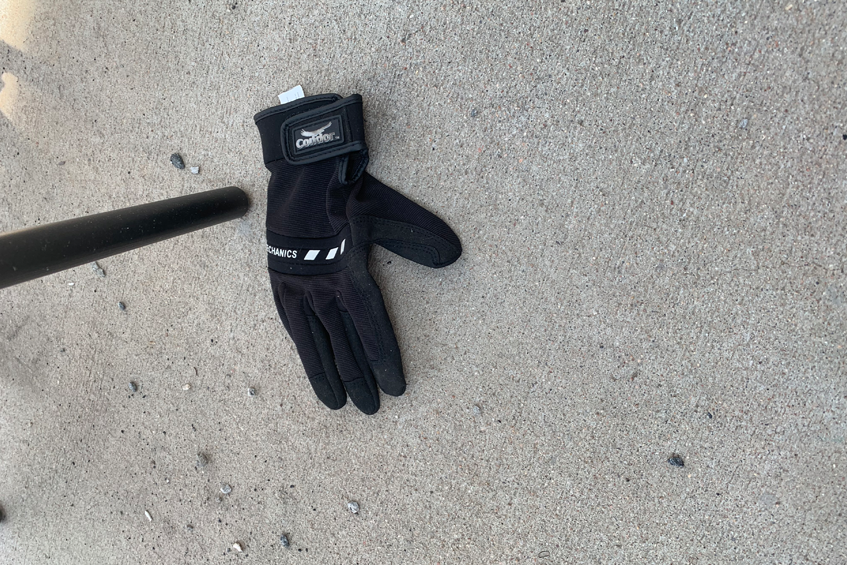Living in the inner city, homeowners complain that street people plug into exterior outlets to charge up their cell phones. Not only is it disturbing to find a stranger tucked up against the side of your house connected to your electrical outlet, but it can allow opportunity to case the joint for a future burglary. And it means the homeowner is paying the tab for random people to charge their phones.
I speak from experience. The glove shown in this photo was left behind when I found an intruder up against the French doors in my backyard, charging his phone, wearing the other glove and carrying a screwdriver. I called Allstar.
Xcel reports that homeowners are charged 10.81 per kWh (kilowatt) during summer months, less in cooler months. Cell phones, while energy efficient, use approximately 2 to 6 watts when charging, while a charger left plugged in without a phone will consume 0.1 to 0.5 of a watt.
If 1 kwh costs about 12 cents and you fully recharge your phone every day, that totals about 2,000-watt hours or 2kWh, almost $20 a year. An iPhone battery operates for between 12-18 hours. Left unaddressed, a homeowner will donate significant coin to the cause over the course of a year.
It’s one reason to want a lockable cover for your exterior outlets. And Allstar Electrical can help.
Outdoor outlets aren’t just a convenience, they’re a safety measure for homeowners. It’s dangerous to plug into an interior outlet and drag a cord outside to plug into a power gardening tool, vacuum to clean out your car, or rotisserie for a family BBQ. Trip and falls over the cord go without saying, but let’s just say that a child inside the house sees the cord and tugs on it. Installing adequate covered exterior outlets are a protection for your family.
The National Electrical Code (NEC) requires that exposed electrical boxes and covers be sturdy and able to shed water. NOTE: the code doesn’t require that the installation be entirely waterproof, but rather protected so that exposure to the weather won’t interfere with successful operation. And the most important thing to remember about installing an outdoor outlet is to make sure it’s a GFCI (Ground Fault Circuit Interrupter) designed to trip the breaker and cuts the electrical current when it’s exposed to the elements—rain, snow, liquid of any kind, even spray pesticides. Think sprinklers, fountains, and swimming pools.
Outdoor outlets are usually surface mounted on older homes built before exterior electrical outlets were a thought. Flush-mounted installations are recessed into siding or wood. The best outdoor flush-mount boxes are purpose-built for exterior use flashed to integrate with water-resistive barriers on exterior walls.
Covers for the exterior outlets can be locked with small padlocks, a deterrent to passersby. If your outlets are covered and locked, it’s simply easier for them to move down the road to an outlet that’s not protected. It’s the same sort of protection a security alarm sticker or sign provides for your home. The FBI reports that homes without a security system are 300% more likely to be burglarized.
Call Allstar today for upgrades to your exterior outlets. Be safe.


